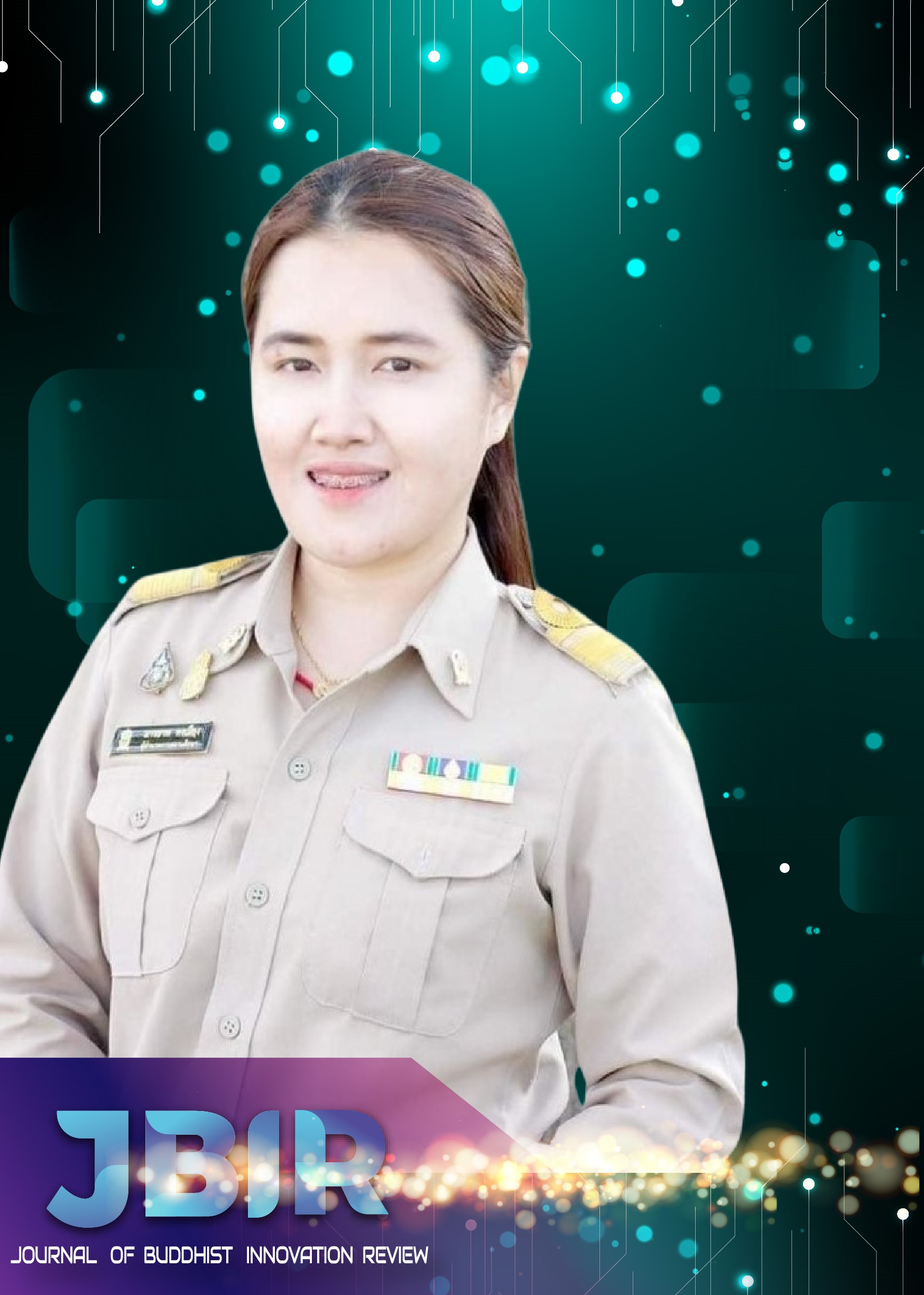A MODEL FOR CULTIVATING MORALITY THROUGH STUDYING BUDDHISM FOR STUDENTS IN PRATHOM 6. UNDER THE JURISDICTION OF SUPHAN BURI PRIMARY EDUCATIONAL SERVICE AREA OFFICE 3 IN BUDDHIST INTEGRATION
Main Article Content
Abstract
In this dissertation, three objectives were purposely made: (1) to study the concepts and management structural principles on the teaching and learning of Buddhism to cultivate morality to primary school students of grade 6, (2) to study the principles of Buddhadhammas that are integrated in managing on the teaching and learning of Buddhism in order to cultivate morality to primary school students of grade 6, and (3) to propose a Buddhist integrated model for cultivating morality through learning Buddhism of primary school students of grade 6 under the supervision of the Suphan Buri Primary Educational Service Area Office 3. This research employed the qualitative research methodology done by studying related documents and research including in-depth interviews with 34 scholars and Buddhist monks and content analysis of data was made through the descriptive analysis.
The research results were considerably found that the management structural principles used in learning and teaching Buddhism involve outlining the course where learning and teaching preparation could be provided as per the given objectives in which the introduction to the course and proper teaching method accorded with its contents and learners are done in line with the process of Active learning approach. Here, media used to motivate students to learn and the effective measurement and evaluation are needed in order to sum up the effectiveness of learning results indicating the outcome gained from learning Buddhism moving to the better level. As far as the principles of Buddhadhamma being integrated with the management of learning and teaching Buddhism for cultivating certain virtues are concerned, they are of three kinds of grounds for accomplishment merit (Puññakiriyã-Vatthu). In this research, the model named ‘HOPE DIAGRAM’ was applied to the cultivation of morality to primary school students of grade 6 as follows: 1) H= means Helpfulness referring to the cultivation of morality to primary school students of grade 6 through Dãnamaya, 2) O means orderliness referring to the cultivation of morality to primary school students of grade 6 through Sĩlamaya, 3) P means peaceful referring to the cultivation of morality to primary school students of grade 6 through Bhãvanãmaya, and 4) E means equilibrium referring to the cultivation of morality to primary school students of grade 6 through three kinds of Puññakiriyã-Vatthu whereby the middle path could be gradually actualized accordingly.
Article Details

This work is licensed under a Creative Commons Attribution-NonCommercial-NoDerivatives 4.0 International License.
เรื่องลิขสิทธิ์/เป็นความคิดเห็นของผู้เขียน
References
หนังสือ
พระธรรมปิฎก (ป.อ.ปยุตฺโต). (2541). ทางสายอิสรภาพของการศึกษาไทย. กรุงเทพมหานคร : มูลนิธิพุทธ-ธรรม.
มหาวิทยาลัยมหาจุฬาลงกรณราชวิทยาลัย. (2539). พระไตรปิฎกภาษาไทย ฉบับมหาจุฬาลงกรณราชวิทยาลัย. กรุงเทพมหานคร: โรงพิมพ์มหาจุฬาลงกรณราชวิทยาลัย.
สำนักงานเลขาธิการสภาการศึกษา กระทรวงศึกษาธิการ. (2562). การวิจัยและพัฒนารูปแบบ กลไกการเสริมสร้างวินัยนักเรียนในสถานศึกษาระดับการศึกษาขั้นพื้นฐาน ด้านการมีจิตอาสา เสียสละ เห็นอกเห็นใจผู้อื่น. กรุงเทพมหานคร: พิมพ์ที่บริษัท พริกหวานกราฟฟิค จำกัด.
วารสาร:
จิรวัฒน์ สุขไสย, ศิรประภา พฤทธิกุล, และปริญญา ทองสอน.(กรกฎาคม - กันยายน). การพัฒนาผลสัมฤทธิ์ทางการเรียนและเจตคติต่อการเรียนวิชาพระพุทธศาสนา สำหรับนักเรียนชั้นมัธยมศึกษาปีที่ 2. วารสารศึกษาศาสตร์ มหาวิทยาลัยนเรศวร, 2564; 23 (3); 99-100.
ลักษณวัต ปาละรัตน์. (กรกฎาคม – ธันวาคม). การใช้หลักศาสนธรรมในพระพุทธศาสนาเพื่อการพัฒนาตน: กรณีศึกษานักศึกษาที่เข้าเรียนวิชาพระพุทธศาสนาเบื้องต้น มหาวิทยาลัยรามคําแหง. วารสารวิจัยรามคำแหง(มนุษยศาสตร์และสังคมศาสตร์. 2563; 23 (2); 33-43.
สัมภาษณ์:
ฉันทนา สุนิธ. ผู้อำนวยการโรงเรียนวัดหนองสังข์ทอง, (สัมภาษณ์ วันที่ 5 กรกฎาคม 2566)
ทิตาภร เพ็ชรวงษ์. ครูโรงเรียนวัดเนินมหาเชษฐ์, (สัมภาษณ์ วันที่ 5 กรกฎาคม 2566)
ธนวรรณ ศกุนตนาค. รักษาการในตำแหน่งผู้อำนวยการโรงเรียนบ้านหนองบัวทอง, (สัมภาษณ์ วันที่ 5 กรกฎาคม 2566)
พิศสมัย วงษา. ผู้อำนวยการโรงเรียนวัดบ้านสระ, (สัมภาษณ์ วันที่5 กรกฎาคม 2566)
วิจิตร เศรษฐสุข. ผู้อำนวยการโรงเรียนวัดหนองผักนาก, (สัมภาษณ์ วันที่6 กรกฎาคม 2566)
อัญชิสา เชยจันทร์, นักเรียนชั้นประถมศึกษาปีที่ 6 โรงเรียนบ้านหนองบัวทอง, (สัมภาษณ์ วันที่ 5 กรกฎาคม 2566)
สนอง ยาจิตร. ครูโรงเรียนวิทยาศาสตร์จุฬาภรณราชวิทยาลัย จ.ลพบุรี, (สัมภาษณ์ วันที่11 กรกฎาคม 2566)


